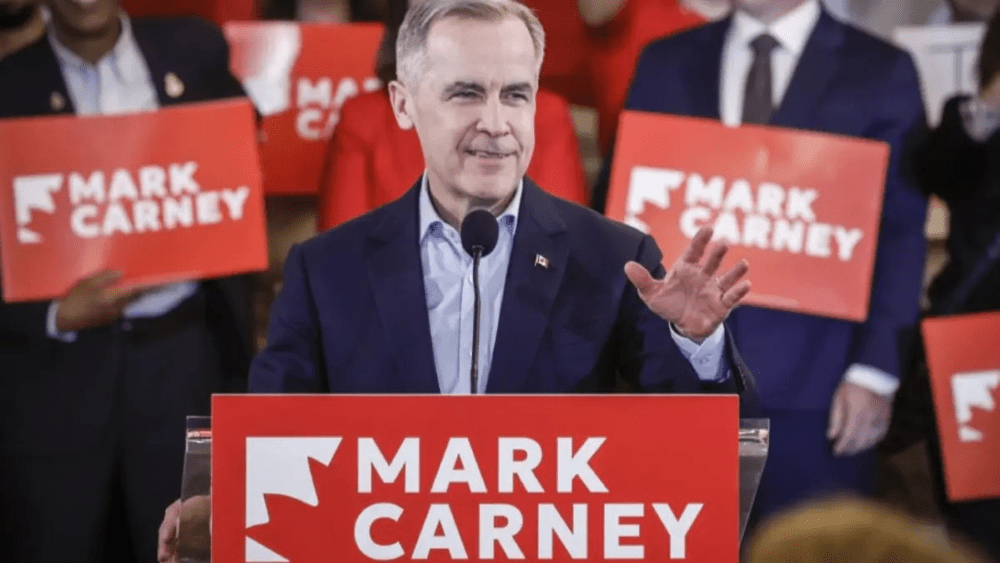Canada’s newly minted Prime Minister Mark Carney doesn’t mess around. In his first nine days, Carney has traveled to France and Britain, ventured to the far north, made a housing announcement in Edmonton, rebuked Trump over the Yemen bombing leak, and called a snap election.
The country’s other politicians also don’t mess around either, and Canadians will vote April 28th. The winner gets to take on Donald Trump and his 25-percent tariffs. Voters appear roused and looking to push back on his “51st state” talk. So is Carney.
Of Trump, said the incoming PM: “He wants to break us so America can own us.” Opposition Conservative Party leader Pierre Poilievre describes himself as “a tough guy to deal with” as qualification for dealing with Trump. America has skin in this game. Trump falsely claims that Canada holds nothing the United States needs. Arrogance and ignorance go hand and hand. So do Washington and British Columbia.
B.C. supplies us with natural gas. Three reservoirs upstream on the Columbia River system store water for the great third powerhouse at Grand Coulee Dam. The big smelter at Kitimat supplies the West Coast with aluminum. The economies of both state and province depend on trade. As well, British Columbia is takeoff locale for the Alaska Highway. Its port at Prince Rupert is of increasing importance for getting goods from Asia to the American Midwest.
Washington and B.C. have cooperated on many fronts, from expanding Amtrak service to managing Fraser River salmon stocks. The Peace Arch is inscribed with the words: “Children of a Common Mother.”
So what about the election? The Canadian House of Commons has 338 seats. The party winning a majority forms the government, and its leader becomes prime minister. As ex-British Columbia Premier Dave Barrett put it, “When the Queen calls you, she gives you the whole bag.” Meaning power.
Since Carney took the helm, and took on Trump, the governing Liberal Party has surged in the polls. The new PM is a Harvard-trained economist who headed the Bank of Canada during the Great Recession, and took the Bank of England through Brexit.
The political landscape of the “Great White North” mirrors that of the US. The Liberals are an urban-suburban party. The opposition Conservative Party is strong in rural Canada and in the Prairie provinces and oil-producing Alberta. The four provinces of Atlantic Canada are Liberal land. So is French-speaking Quebec, but with competition from the separatist Bloc Québécois party. Ontario is a battleground: Elections are frequently decided in the “401 belt,” referring to a crowded freeway that traverses populous southern Ontario.
Conservatives dominate Manitoba, Saskatchewan, and Alberta. The party leader, Poilievre, is a prickly, divisive, Trump-like figure. The Conservatives’ popularity has stemmed largely from the unpopularity of Liberal ex-PM Justin Trudeau.
And then there’s BC, with 43 seats in the House of Commons. In BC it’s a three-way race among Liberals, Conservatives, and the labor-left New Democratic Party. The NDP has propped up the Liberals in parliament but is fading in the polls as the Liberals chase the Conservatives.
The Liberals also benefit from the first break in the short campaign. Danielle Smith, right wing premier of oil-rich Alberta, gushed about Pierre Poilievre in a Breitbart News interview. Poilievre is, said Smith, “very much in sync” with Trump and “new trends in American politics.”
That statement won’t win votes, at least not in Vancouver. The city has two reasons to despise the Donald. The first is his tariff on Canadian exports; the second, Vancouver is a multinational city with a big immigrant population. The president’s name has been stripped from what once was the Trump hotel downtown.
BC Premier David Eby is urging the citizenry to shop in Canada for Canadian-made products and to vacation in the province rather than going South. He is threatening to slap a tariff on Alaska-bound traffic. The premier, like so many Canadians, has kinfolk in the U.S.
The Liberals captured 160 House of Commons seats in Canada’s 2021 election. With Trudeau at the helm, they were projected to hold onto just 55-60. The surveys, with Carney in charge, have the party at 175 seats, or a bare majority.
Who ever said Canada was a dull country?
This article also appears in Cascadia Advocate.

Years ago, I helped start a quarterly magazine devoted to the common topics of Washington, Oregon, and British Columbia. It was called “The New Pacific,” and its editor was Eileen Quigley. The thought was that it would be the forerunner of a New Pacific think tank. Still a good idea, as we share geography, industry, environmental politics.
Canada does have something Trump very much wants: A large supply of critical minerals. With China cutting off the USA from its huge wealth of minerals used for engineering, technology and the like, Trump is eyeing one of the remaining big producers, namely Canada. https://youtu.be/TKQhpLIutdw?si=XJih1ra8tibu54Ky
As for Canadian political science, I wonder why the Conservatives have essentially been the sole flag bearers for the country’s right. While the Liberals have always had to deal with the NDP and now the Greens on the left, I can only think of the short-lived, Western-based Reform party of the ’90s as a challenger to the Tories on the right.
I’m also curious about the rightward turn of Saskatchewan. In 1988, the first Canadian election I followed, 10 of the 14 seats went NDP. Now, the Conservatives have a stranglehold on the province. Socialist to Tory in just a few decades?